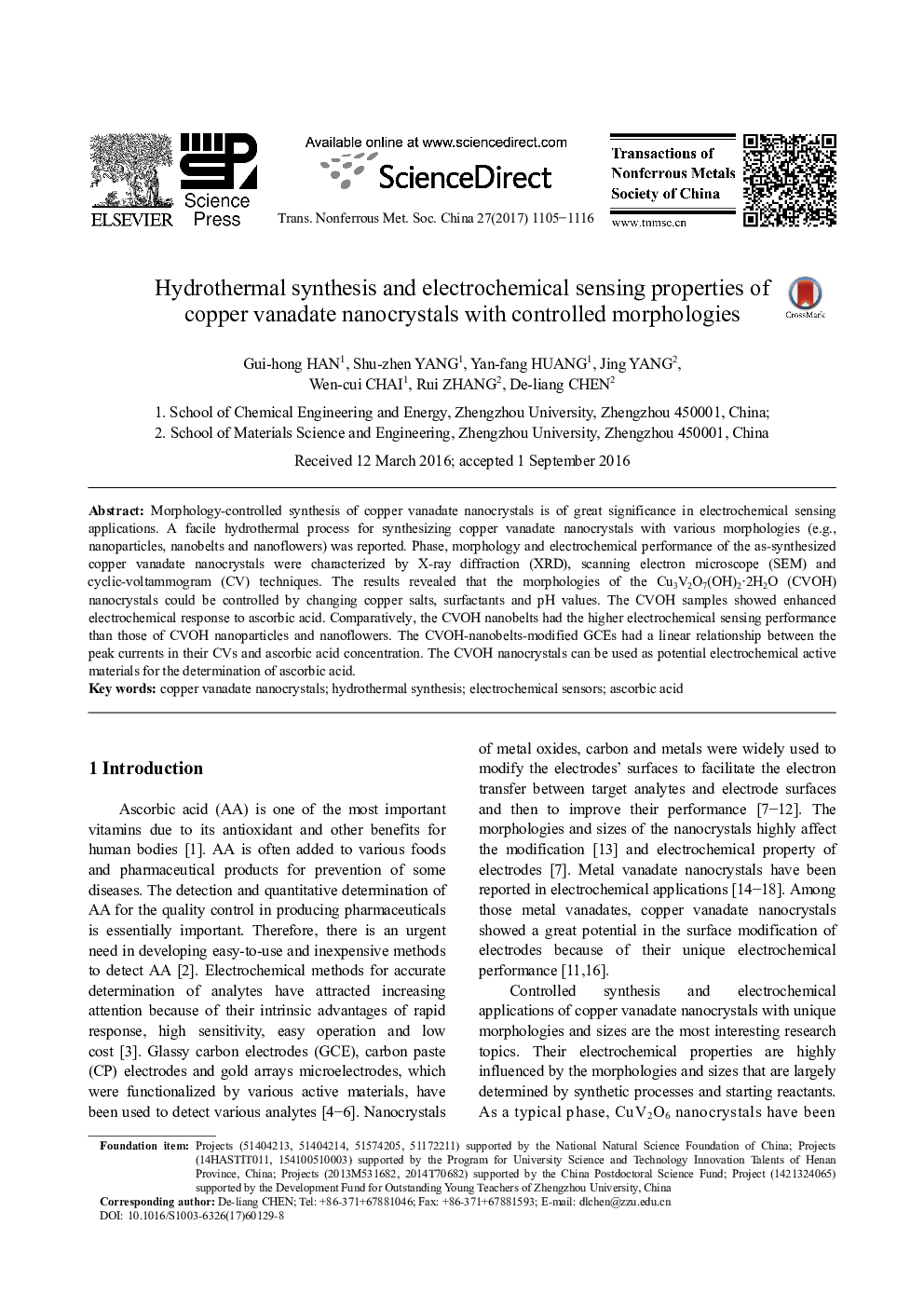| Article ID | Journal | Published Year | Pages | File Type |
|---|---|---|---|---|
| 8011930 | Transactions of Nonferrous Metals Society of China | 2017 | 12 Pages |
Abstract
Morphology-controlled synthesis of copper vanadate nanocrystals is of great significance in electrochemical sensing applications. A facile hydrothermal process for synthesizing copper vanadate nanocrystals with various morphologies (e.g., nanoparticles, nanobelts and nanoflowers) was reported. Phase, morphology and electrochemical performance of the as-synthesized copper vanadate nanocrystals were characterized by X-ray diffraction (XRD), scanning electron microscope (SEM) and cyclic-voltammogram (CV) techniques. The results revealed that the morphologies of the Cu3V2O7(OH)2·2H2O (CVOH) nanocrystals could be controlled by changing copper salts, surfactants and pH values. The CVOH samples showed enhanced electrochemical response to ascorbic acid. Comparatively, the CVOH nanobelts had the higher electrochemical sensing performance than those of CVOH nanoparticles and nanoflowers. The CVOH-nanobelts-modified GCEs had a linear relationship between the peak currents in their CVs and ascorbic acid concentration. The CVOH nanocrystals can be used as potential electrochemical active materials for the determination of ascorbic acid.
Related Topics
Physical Sciences and Engineering
Materials Science
Metals and Alloys
Authors
Gui-hong HAN, Shu-zhen YANG, Yan-fang HUANG, Jing YANG, Wen-cui CHAI, Rui ZHANG, De-liang CHEN,
